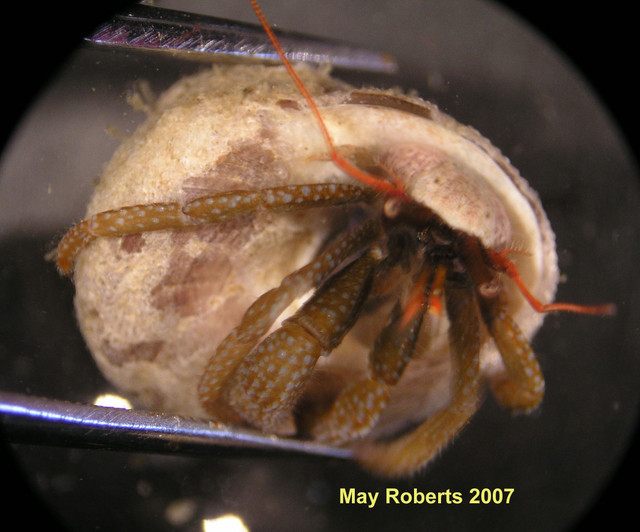
All crustaceans have a segmented body; the malacostraca have 19 while the cirripedia have up to 8, depending on their size.
Crustaceans have bilateral body symmetery, a line drawn down the medial aspect of their rostrum or carapice dividing their body into two equal halves. This is difficult to see in hermit crabs, but delicate manipulation of the host shell can draw the crab out, exposing their body for observation.
The exoskeleton is another difining characteristic of the crustaceans. This hard exterior shell serves as the attachment poin for the soft tissues inside and is composed of chitin. Chitin is produced by the organism and hardened using calcium from the seawater. Growth is constrained by the exoskeleton and requires the shedding of the hard shell during molting. Prior to a molt, the crustacean will reabsorb as much of the calcium from its old shell as possible.
Crustaceans are considered to be mandibulate, with sepreately moving mouth parts. These parts are not to be confused as adapted legs but rather a seperate means of gathering food. Many crustaceans will create a feeding current by rapidly moving their mouths, facilitating the collection of phytoplankton.
Crustaceas are almost exclusively sexual reproducers, though some species of shrimp have the ability to change sex as they mature. The male fertilizes the female directly even in barnacles and the reproductive fecundity of the organism relies on it's ability to reach a barnacle of the opposit sex.
Femal crabs have the ability to store male sperm from a single encounter for use in multiple fertilizations. Once her eggs are ready, they are carried beneath the tail segment in a pleiopod. The female cares for the eggs until they reach maturity.
